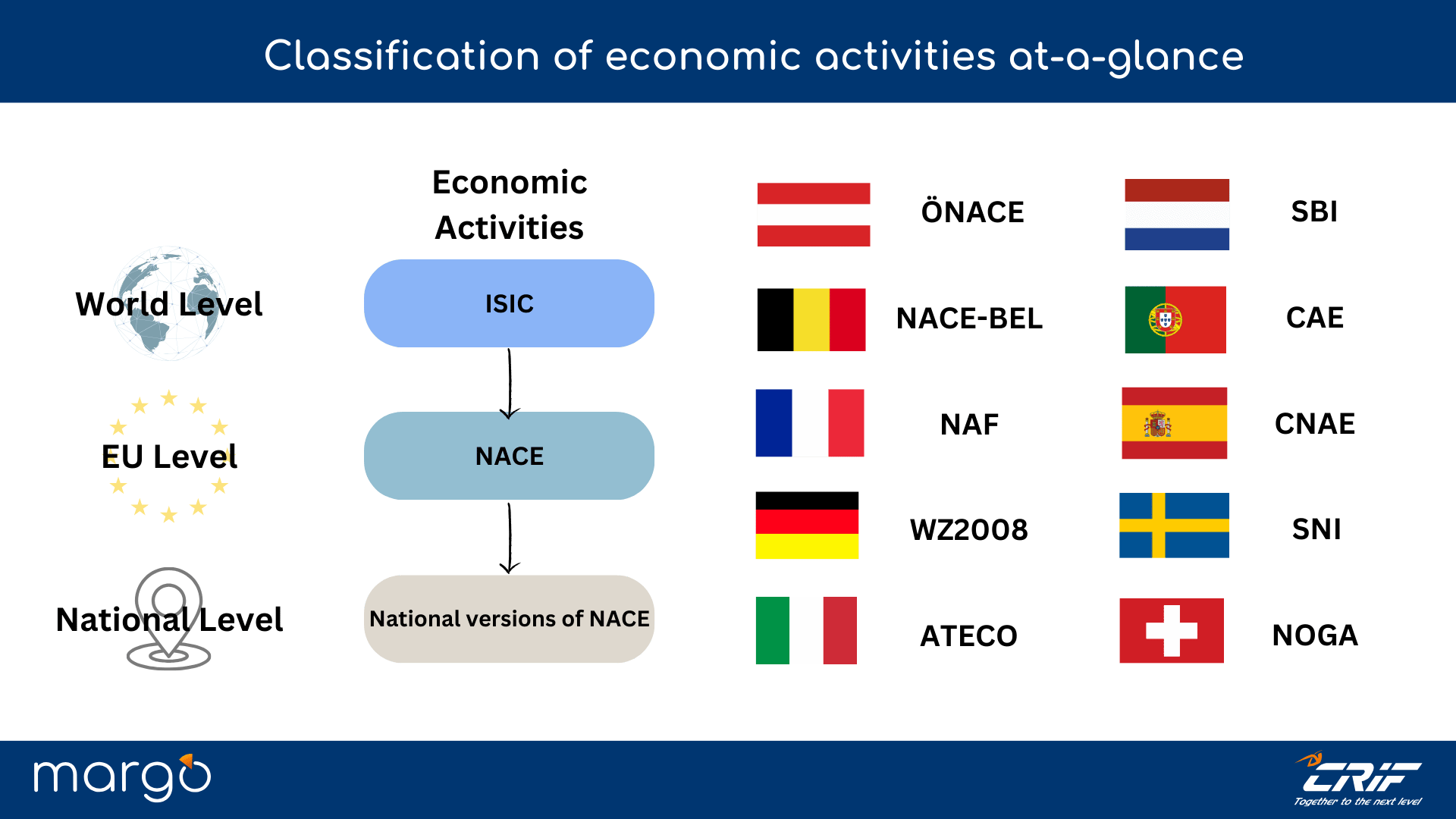
What is the NACE code?
The NACE code - short for the Statistical Classification of Economic Activities in the European Community (EU) - was introduced in 1970 by Eurostat, the statistical office of the European Union located in Luxembourg. Derived from the French Nomenclature statistique des activités économiques dans la Communauté européenne, NACE provides a standardized framework for collecting and presentation statistical data pertaining to economic activities across a diverse range of sectors.
Why is the NACE code so important?
Structured in a 4 digit classification system the NACE code encompasses broad sectors, subsectors, and detailed categories, facilitating a comprehensive classification of economic activities. Each activity corresponds to a unique code within the NACE classification, streamlining data collection analysis and reporting across different countries and sectors.
Government agencies, statistical offices, researchers, businesses, and international organizations utilize the NACE code for purposes such as economic analysis, policy development and market research. Since its inception in 1970, various versions of NACE have been developed to adapt to evolving economic landscapes.
How is the NACE code called in European countries?
Within the European Union, each member state standardizes the definitions of European economic activities to prevent statistical misunderstandings across sectors and activities conducted by individuals and legal entities within the European Community. While legislation mandates the use of this classification for statistical purposes, it does not require EU Member states to publish, collect or provide data.
The translation of NACE codes in some European States:
- Austria: ÖNACE - Österreichische Klassification der Wirtschaftszweige
- Belgium: NACE-BEL - Nomenclature statistique des activités économiques dans la Communauté européenne (la version belge)
- France: NAF - Nomenclature des Activités Françaises
- Germany: WZ2008 - Klassifikation der Wirtschaftszweige, Ausgabe 2008
- Italy: ATECO - Classificazione delle Attività Economiche
- Netherlands: Standaard Bedrijfsindeling (SBI)
- Portugal CAE - Classificação Portuguesa de Actividades Económicas
- Spain: CNAE - Código Nacional de Actividades Económicas
- Sweden: SNI - Svensk näringsgrensindelning
- Switzerland: NOGA - Nomenclature Générale des Activités Économiques

What about other States?
The NACE classification draws its foundation from the ISIC (International Standard Industrial Classification) an international system of economic and industrial activities introduced by the United Nations statistical institutions.
Each group in the classification is identified by a title and an alphanumeric code, followed by a description outlining the group’s scope.
United States, Canada and Mexico rely on another standardized system known as the NAICS - North American Industry Classification System. The NAICS code is used by government agencies, businesses and researchers to collect, analyse and publish statistical data on the US economy.
It replaced the older Standard Industrial Classification (SIC) system in 1997.
Learn more about the differences between the NAICS and SIC code
Look up the NACE Code on Margo
With Margo, CRIF’s marketing intelligence platform, you can use NACE code as a parameter for analysing a specific market. In this way, Margo displays the distribution of companies broken down by territory, risk, turnover, employees and legal form.
All the identified criteria are presented in graphical distributions. Within the analysis you can save your research, create a portfolio to manage your leads and then prioritize your sales activities.
There is more: Margo Semantic Search, which allows you to address the limitations of the NACE classification by using keyword related to their activities or product to search for companies.
Analyze B2B markets by making use of the nace code and the semantic search.